What Are Options and How Do They Work?
In simple words, Options are financial contracts that give you the right, but not the obligation, to buy or sell a stock at a fixed price before a specific date.
It's like making a reservation, you secure a price for something now, but you don’t have to commit to buying it unless you want to.
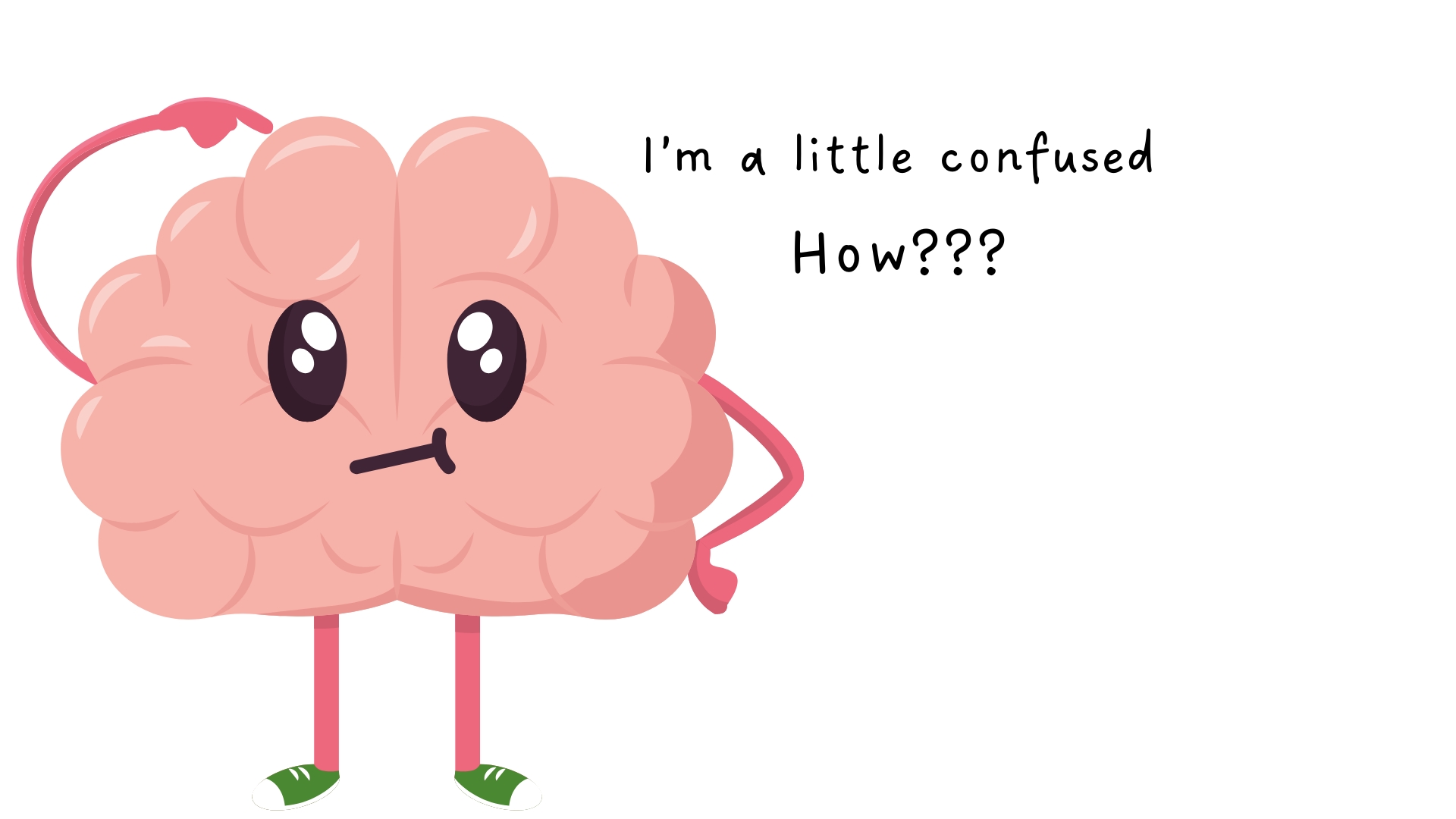
Options can be confusing at first, but let’s break it down in a way that actually makes sense!
Think of it like this:
You want to buy the newest iPhone, but you’re not sure if the price will go up or down next month. So, you go to Apple and say,
“Hey, hold this iPhone for me at today’s price, and I’ll decide later if I want to buy it. If the price goes up, I’ll still get it at today’s lower price. If the price goes down, I’ll walk away.”
Apple agrees, but there’s a catch they won’t do this for free. You have to pay them a premium (a small deposit) to reserve the phone.
Now, if the price of the iPhone goes up, you get a great deal because you can still buy it at the lower price you locked in. But if the price goes down, you’re not forced to buy it—you can walk away.
The only downside?
You lose the premium you paid. That’s exactly how options work in the stock market. You pay a premium for the right to buy or sell a stock at a set price before a certain date.
If the stock moves in your favor, you lock in a great deal. If it doesn’t, you can walk away, but you won’t get your premium back.
Options are used in different ways. Some traders use them to bet on whether a stock’s price will go up or down, while others use them to protect their investments from potential losses.
Another reason traders like options is that they provide leverage, allowing them to control a larger amount of stock with less money.
While options can be a powerful tool for making money in the market, they also come with risks. Since they have an expiration date, if the stock doesn’t move as expected before the option expires, it becomes worthless. That’s why understanding how options work and using them is important for any trader looking to take advantage of them.
The Three Key Parts of an Option
Before jumping into options trading, it’s essential to understand the key components that make up an options contract.
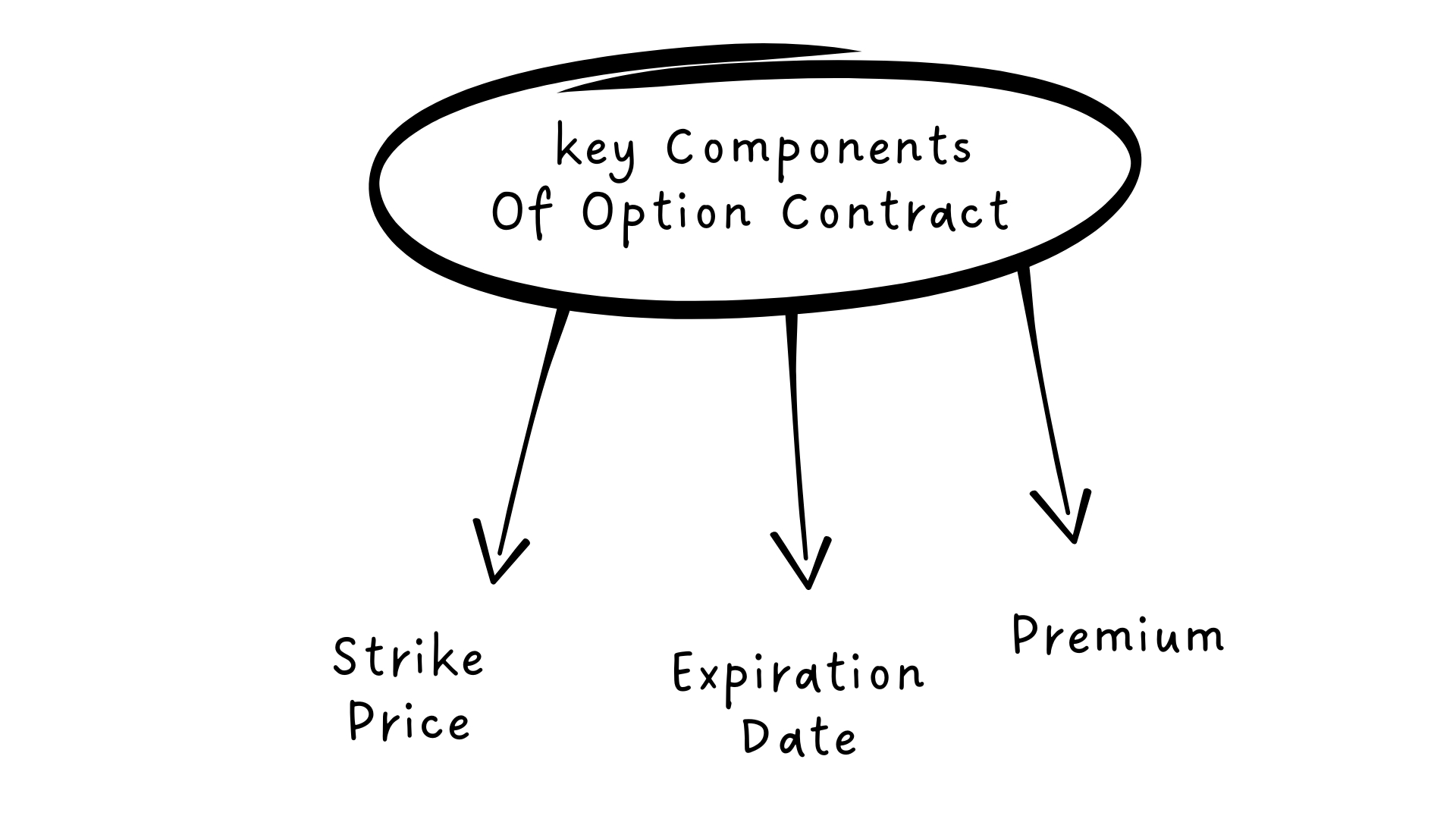
Strike Price: This is the price at which an option can be exercised.
Expiration Date: This is the date when the option contract expires. After this date, the option becomes worthless if it hasn’t been exercised or sold.
Option Premium: This is the price you pay to buy an option.
Now that you know the key parts of an option, let’s look at the different types of options and how they work.
Types of Options
There are two types of options: calls and puts.
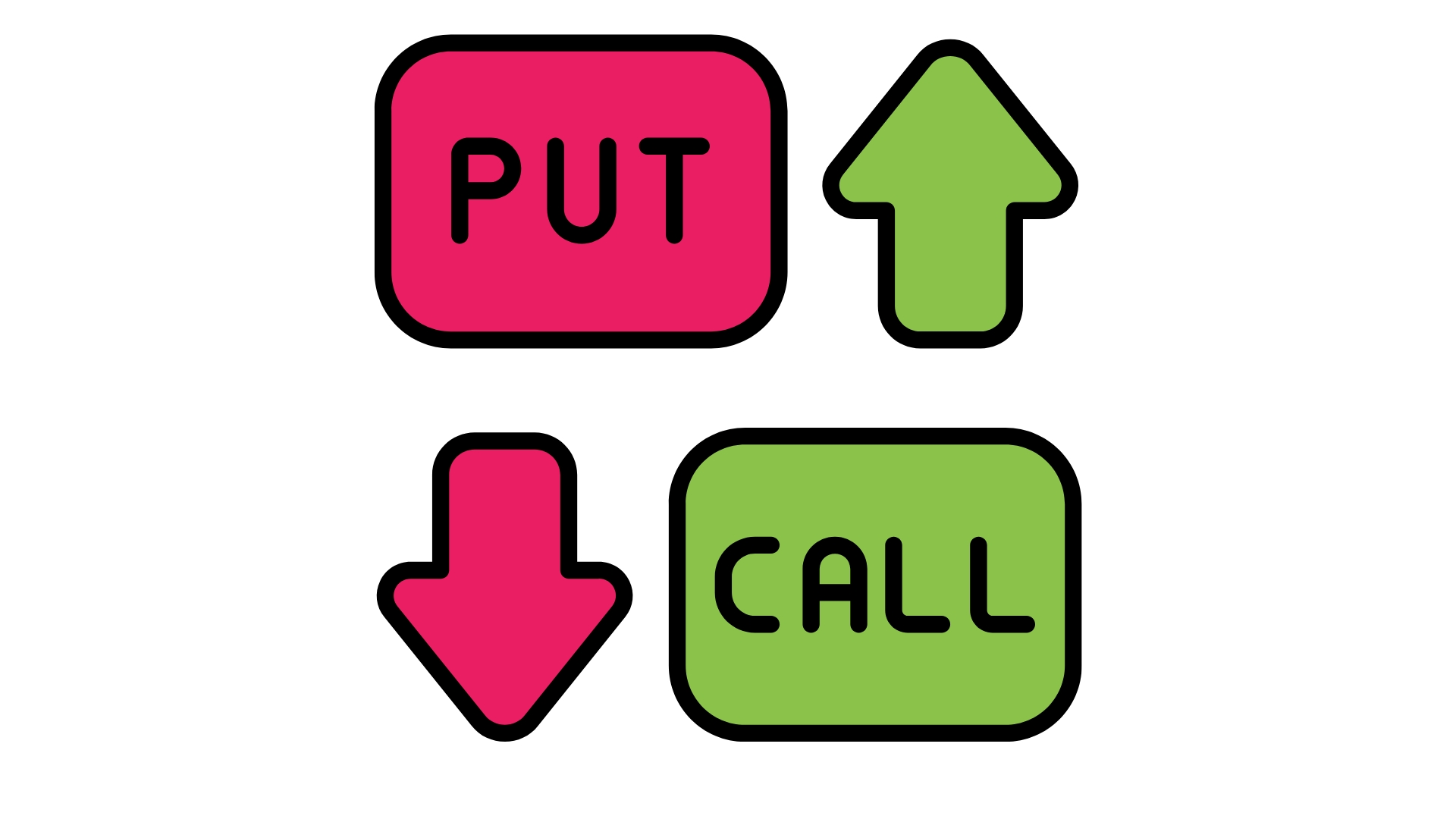
A call option is a contract that gives you the right to buy a stock at a specific price before a set expiration date. Traders buy call options when they believe a stock’s price will rise. If the stock does go up, the call option increases in value and the trader can sell it for a profit or use it to buy the stock at a discount.
For example, Let's say Tesla stock is currently trading at $300. If you think the price will go up, you might buy a call option with a strike price of $310 that expires in one month. If Tesla’s price goes to $330 before expiration, your option gains value because you can still buy at $310 while the market price is $330. You can either sell the option for a profit or exercise it to buy the stock at a lower price.
A put option is the opposite. It gives you the right to sell a stock at a set price before expiration. Traders buy put options when they expect a stock’s price to drop. If the stock does fall, the put option becomes more valuable because it allows the trader to sell the stock at a higher-than-market price, locking in a profit.
Now, let’s say you expect Tesla’s price to drop instead. You buy a put option with a strike price of $290. If Tesla falls to $270, your put option gains value because you can sell at $290 while the market price is lower at $270. Again, you can either sell the option for a profit or exercise it to sell the stock at a better price.
A call option makes money when a stock rises, while a put option makes money when a stock falls.
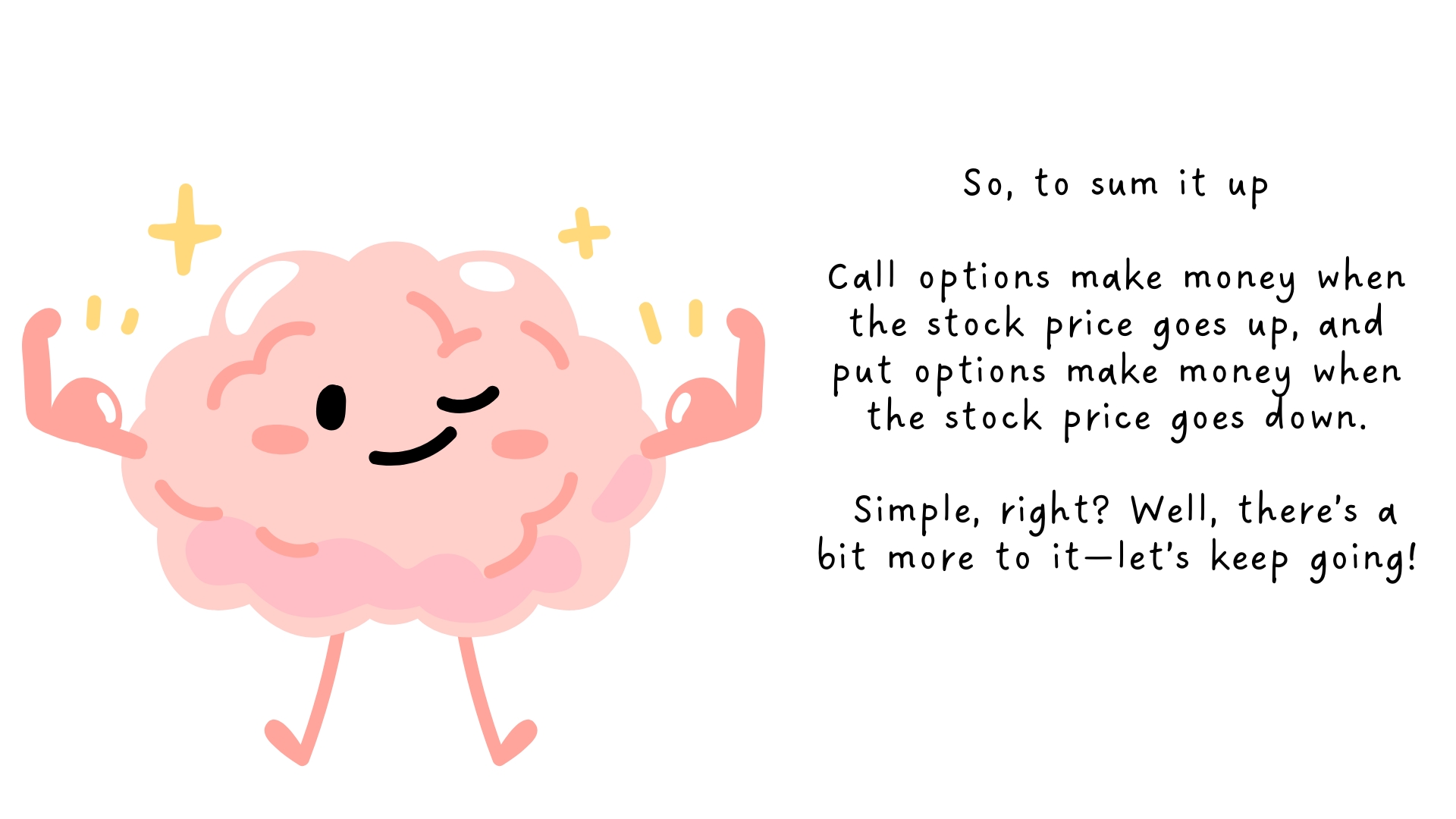
Options Greeks
Alright, so now you know what call and put options are… but wait, there’s more!
Meet the Options Greeks – the squad that secretly controls how your options move.
Think of them like the hidden forces of the options world, kind of like the weather.
Ignore them, and you might get caught in a financial thunderstorm!
So, let's understand what options Greeks are
Option Greeks are mathematical measurements that help traders understand how an option’s price changes based on different factors. They are called “Greeks” because each one is represented by a Greek letter. These measurements help traders manage risk and predict how an option will behave as the stock price, time, and market volatility change.
There are four main Option Greeks that are: Delta, Gamma, Theta, and Vega.
Delta – How Much the Option Price Moves with the Stock Price
Delta tells you how much the option price will change when the stock price moves by $1.
Let’s say a call option has a delta of 0.50. If the stock goes up by $1, the premium should go up by $0.50.
If the stock goes down by $1, the premium goes down by $0.50.
Put options work the same way, but in reverse. If a put option has a delta of -0.50, then when the stock drops $1, the premium rises by $0.50. If the stock goes up $1, the premium falls by $0.50.
Call deltas range from 0 to 1.
Put deltas range from -1 to 0.
If your option is deep in-the-money, delta will be close to 1 (or -1).
If it’s far out-of-the-money, delta will be closer to 0.
Also, the stock doesn’t have to move a full dollar. If it moves 50 cents and your delta is 0.50, the premium would go up around 25 cents.
Gamma – How Fast Delta Changes
Gamma measures how much Delta changes when the stock moves.
Let’s say a call option has a delta of 0.40 and a gamma of 0.13. If the stock rises by $1, the new delta becomes 0.53. On the next $1 move, the option becomes more sensitive, adding 53 cents instead of 40.
So delta is like speed, and gamma is like acceleration.
Gamma is highest for options that are at-the-money and close to expiration.
High gamma means the option’s sensitivity to price changes increases fast.
This can lead to big swings in premium, especially near expiration.
Option buyers love high gamma, it means quick gains when the stock moves.
Option sellers hate it, it means more risk.
Theta – The Effect of Time Decay
Theta measures how much an option loses value over time. Options lose value every day, even if the stock price doesn’t move, because as expiration gets closer, the chance of the option ending up profitable decreases.
If an option has a theta of -0.05, it means the option will lose 5 cents per share per day just from time decay. Since one options contract represents 100 shares, this means a loss of $5 per day.
Theta is like the sand slipping through an hourglass it never stops, and once it’s gone, you can’t get it back.

Vega – The Effect of Volatility on Option Prices
Vega shows how much the option price will change if implied volatility (IV) changes.
If an option has a vega of 0.10, then a 1% rise in implied volatility (IV) will increase the premium by $0.10 per share, or $10 per contract. A 1% drop in IV will reduce the premium by the same amount.
Higher volatility = higher option prices.
Lower volatility = cheaper options.
This is because when markets are volatile, traders expect big price swings—and they’re willing to pay more to be part of the action.
Out-of-the-money and long-dated options are more sensitive to changes in volatility, so they usually have higher vega.
Why the Greeks Matter
These four Greeks work together to explain why option prices change.
- Delta shows how the stock’s movement affects the option.
- Gamma shows how fast delta changes.
- Theta shows how time eats at the premium.
- Vega shows how volatility make premium rise or fall
If you want to become a smart options trader, you can’t just guess. You need to understand what’s happening under the surface. The Greeks help you do exactly that.
Implied Volatility
What It Is and Why It Matters in Options Trading
Implied Volatility, or IV, is one of the most important and misunderstood parts of options trading.
It tells you how much the market thinks a stock might move in the future. It doesn’t predict which direction the stock will go, just how volatile it’s expected to be.
Higher IV means traders expect bigger price swings. Lower IV means they expect the stock to stay relatively calm.
Let’s break this down with a simple idea.
Think of IV like weather forecasts.
- A high IV is like hearing there’s a storm coming, everyone prepares for big movement.
- A low IV is like a calm, sunny forecast, nothing major expected.
In the market, that “storm” could be earnings reports, product launches, economic news, or anything that might cause a stock to jump or drop.
IV vs. Historical Volatility
It’s important to know the difference between implied volatility and historical volatility:
- Historical Volatility looks at how much a stock has actually moved in the past.
- Implied Volatility is based on what traders expect will happen in the future.
IV is forward-looking. It’s calculated using real-time options prices, based on how much demand there is for those contracts.
How Does IV Affect Option Prices?
This part is huge.
IV directly impacts the extrinsic value of an option (the part of the option’s price that comes from time and expectations).
When IV is high:
- Options become more expensive.
- The market expects a big move.
- Sellers demand higher premiums to take on more risk.
- Buyers are willing to pay more in hopes of a large payoff.
When IV is low:
- Options become cheaper.
- The market expects little movement.
- There’s less perceived risk, so premiums drop.
It doesn’t matter if the stock hasn’t moved yet—if traders think it might, IV will still rise and drive prices up.
IV Crush – The Silent Killer of Option Buyers
Imagine this: You buy a call option before a big earnings report, expecting a pop in price.
The stock moves up like you thought…but your option loses value.
Why? IV crush.
Before the earnings report, IV was high, and everyone expected a big move. Once the event passes and uncertainty disappears, IV drops fast. That sudden drop in IV drags down the option price, even if the stock moves in your favor.
This is IV crush and it’s a brutal lesson for new traders.
Let’s say Apple is trading at $180.
Earnings are coming next week, so options are expensive, implied volatility is high.
You buy a call option for $5.
Apple reports earnings and beats expectations. The stock jumps to $185.
You check your option…
It’s still worth $5.
What happened?
Even though the stock went up, IV collapsed after earnings. The drop in IV erased any gains from the stock move. You break even, or worse, you might even lose money.
High vs. Low IV: What It Means for Traders
High Implied Volatility
- Options are expensive.
- Better for selling options (you collect bigger premiums).
- Risky to buy options (IV could drop and kill your premium).
- Common before earnings, news events, or in volatile markets.
Low Implied Volatility
- Options are cheaper.
- Better for buying options (you get more value for your money).
- Not ideal for selling (premiums are smaller).
- Common when markets are calm and no news is expected.
Why Implied Volatility Matters in Options Trading
Understanding IV isn’t just a nice bonus, it’s essential.
If you ignore IV, you can:
- Overpay for an option
- Lose money even when you’re right
- Miss out on safer premium-selling opportunities
But if you use IV wisely, you can:
- Time your trades better
- Pick the right strategies (like buying when IV is low or selling when it’s high)
- Avoid common beginner mistakes like falling into an IV crush
How to Measure IV?
IV Rank and IV Percentile
To know if IV is high or low relative to the past, traders use tools like:
- IV Rank: Tells you where current IV stands compared to its past range (0 to 100).
- IV Percentile: Shows how often IV was lower than the current level over a specific period.
For example:
- If a stock’s IV Rank is 80, it means current IV is higher than 80% of what it’s been over the last year — a great time to sell options.
- If the IV Percentile is 15, then IV is relatively low — better for buying options
Final Thoughts
Implied volatility is like the heartbeat of the options market. It doesn’t tell you where a stock is going, but it tells you how big the move might be — and how much traders are paying to bet on it.
Mastering IV will give you a serious edge in options trading. It helps you read the mood of the market, plan smarter trades, and avoid paying too much for hype.
Moneyness in Options
What ITM, ATM, and OTM Really Mean and Why They Matter
When you hear traders say “this option is in the money” or “that one’s out of the money,” they’re talking about something called moneyness.
Moneyness tells you how an option’s strike price compares to the current market price of the stock. It helps answer one simple question:
If I exercised this option right now, would it be profitable?
There are three types of moneyness you need to know:
- In the Money (ITM)
- At the Money (ATM)
- Out of the Money (OTM)
Let’s break them down with simple logic and real examples.
In the Money (ITM)
This is where every trader wants their option to be.
An option is in the money when it already has real value. If you exercised it right now, you’d make money.
- A call option is ITM when the stock price is above the strike price.
- A put option is ITM when the stock price is below the strike price.
Think of it this way: your option is winning.
Example:
You have a call option with a strike price of $90. The stock is trading at $100.
You can still buy it for $90 even though it’s worth $100 in the market. That $10 difference? That’s your intrinsic value. That’s what makes it “in the money.”
Same thing with puts. If your put lets you sell at $50 and the market price is only $40, you’re $10 in the money.
Out of the Money (OTM)
Now flip it around.
An option is out of the money when it has no real value yet. It’s not profitable to exercise. You’re basically saying, “This needs to move if I want to make money.”
- A call option is OTM when the stock price is below the strike price.
- A put option is OTM when the stock price is above the strike price.
It doesn’t mean the trade is bad it just means you’re not there yet.
Example:
You have a call with a $110 strike, and the stock is trading at $100.
Would you want to pay $110 when the market is offering it for $100? No. So your option is out of the money.
OTM options are cheaper because they’re less likely to pay off. But if the stock moves your way, the payoff can be huge especially with leveraged contracts.
At the Money (ATM)
This is the tipping point.
An option is at the money when the strike price and stock price are almost the same.
- It’s not profitable to exercise yet.
- It’s not totally worthless either.
It’s sitting right on the edge waiting for the next move to decide its fate.
Example:
You have a put with a $50 strike. The stock is trading at $50.
It could go either way. Up or down. Right now, there’s no intrinsic value, but plenty of potential.
ATM options tend to have the highest extrinsic value meaning they’re packed with time and volatility pricing. That makes them popular for short-term trading.
Why Moneyness Matters
Moneyness isn’t just a label. It changes how an option behaves.
- ITM options are more expensive but safer. They already have value.
- OTM options are cheaper but riskier. They’re a bet that the stock will move.
- ATM options are the most sensitive to price swings and volatility.
Moneyness affects everything how your option is priced, how the Greeks behave, and what kind of strategy you should use.
If you’re buying options, moneyness tells you how close you are to profit.
If you’re selling options, it helps you gauge the risk and reward.
Bottom line?
Before you ever enter an option trade, know where you stand on the moneyness scale. It could make or break your trade.
What Happens When an Option Expires?
Every option has an expiration date. When that day arrives, one of three things happens.
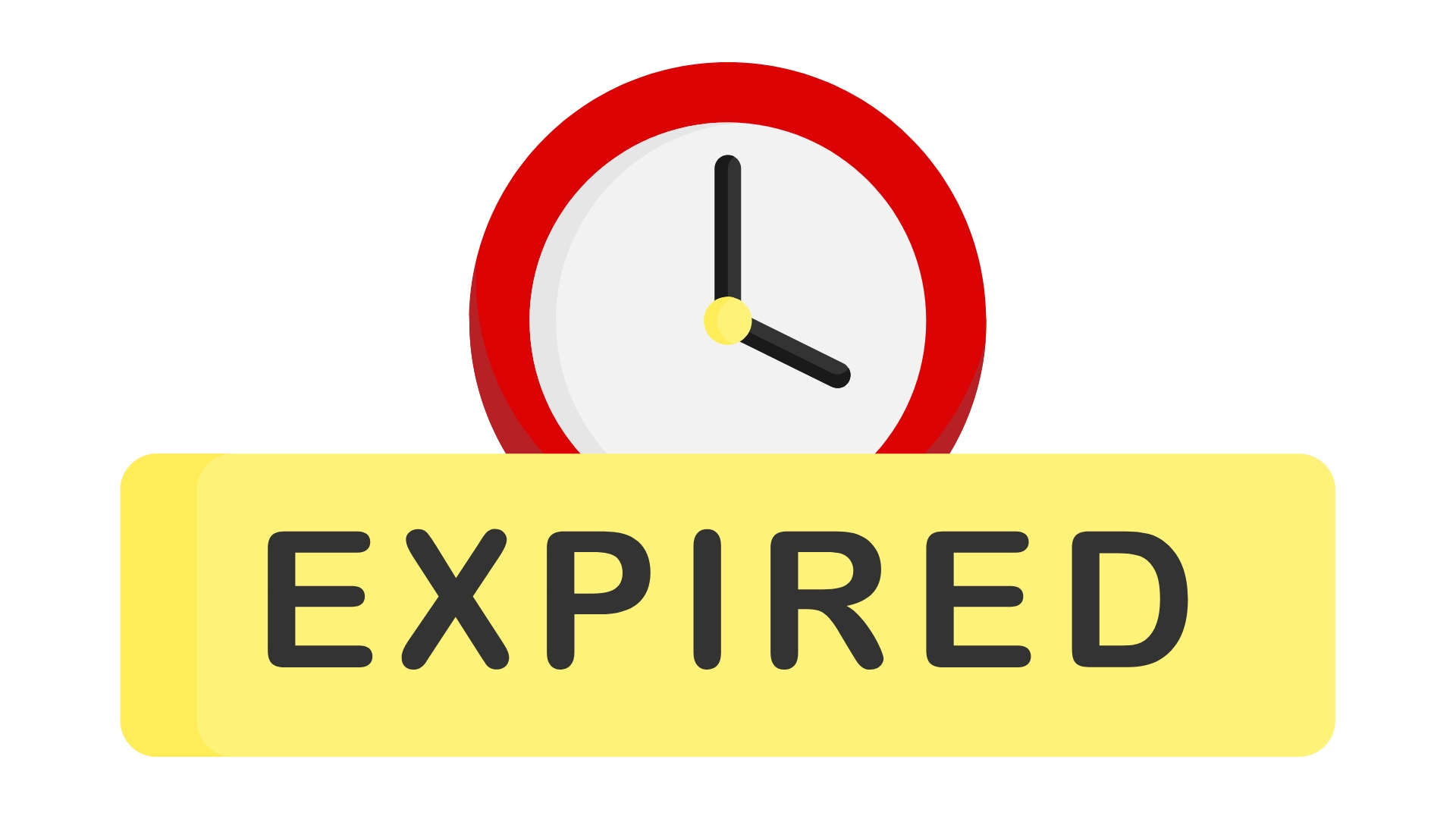
If the option is in the money (ITM), meaning the stock price is above the strike price for calls or below for puts, the option has value and can be exercised or sold.
If the option is out of the money (OTM), meaning the stock didn’t reach the strike price, the option expires worthless, and you lose what you paid for it.
If the option is at the money (ATM), meaning the stock price is exactly at the strike price.
Most traders don’t wait for options to expire. Instead, they sell their options before expiration to lock in profits or cut losses.
Intrinsic and Extrinsic Value
When trading options, you’ll often hear about intrinsic value and extrinsic value. These two terms are key to understanding how an option is priced. Don’t worry, we’ll break it down in a way that its easier to understand.
Intrinsic Value: The “Real” Value of an Option
Intrinsic value is the part of an option’s price that comes from how much it’s already in the money (ITM). In simple terms, it’s the amount of profit you’d have if you exercised the option right now.
Call Option: Intrinsic value is how much the stock price is above the strike price.
Put Option: Intrinsic value is how much the stock price is below the strike price.
Let’s say you buy a call option with a strike price of $50, and the stock is currently trading at $60. Since the option lets you buy at $50 while the market price is $60, the intrinsic value is $10 ($60 - $50).
If a put option has a strike price of $50 and the stock is at $40, its intrinsic value is $10 ($50 - $40).
If an option is out of the money (OTM) — meaning a call’s strike price is above the stock price or a put’s strike price is below the stock price, it has zero intrinsic value.
Extrinsic Value: The “Time and Hype” Value
Extrinsic value is the extra price you pay on top of the intrinsic value. This comes from factors like time until expiration and market demand. Even if an option has no intrinsic value (because it’s out of the money), it can still have extrinsic value.
What Affects Extrinsic Value?
Time to Expiration: More time means more chances for the stock to move in your favor, so the extrinsic value is higher. As expiration gets closer, this value shrinks a process called time decay.
Implied Volatility: If traders expect big price swings, option prices go up, adding to extrinsic value.
Example:
Let’s say you buy a call option with a strike price of $50 when the stock is trading at $48. This option is out of money, so it has zero intrinsic value, but it still has extrinsic value because there’s a chance the stock could go above $50 before expiration.
Why Traders Use Options: Hedging, Speculation, Leverage
Options aren’t just for guessing stock prices. Traders use options for three main reasons: hedging, speculation, and leverage.
Hedging – Protecting Your Investments
Think of hedging as buying insurance for your stock. Let’s say you own a stock, but you’re afraid its price might drop. Instead of selling your shares, you buy a put option.
If the stock price falls, your put option gains value, helping to cover the loss in your stock investment. This way, even if the stock price goes down, your put option makes money, reducing your overall loss.
Speculation – Making Bets on Stock Prices
Some traders use options to bet on stock price movements. Instead of buying a stock for full price, they buy options because they are cheaper.
- If they think a stock will go up, they buy a call option.
- If they think a stock will go down, they buy a put option.
If the price moves in their favor, they sell the option for a profit. If it doesn’t, they lose only the amount they paid for the option.
Leverage – Controlling More with Less Money
One of the biggest reasons traders use options is leverage. A single-option contract lets you control 100 shares of stock without having to pay for all of them upfront.
For example, instead of spending $10,000 to buy 100 shares of a stock at $100 per share, you could buy an option for a few hundred dollars and still profit if the stock moves in your favor.
This can lead to big profits but also big losses if the trade doesn’t go your way. That’s why traders must be careful when using leverage.
How to Trade Options
Before trading options, you need to be approved by your broker. This usually involves applying for options and margin trading approval, as brokers want to ensure you understand the risks.
Once approved, there are four main ways to trade options:
Long call
A long call is when you buy a call option because you think the stock price will go up. This gives you the right to buy the stock at a set price before the option expires. If the stock goes higher than that price, you can buy it cheaper than the market and make a profit. If the stock doesn’t move up, you lose only the small amount you paid for the option.
Let's say a stock is trading at $50, and you buy a call option with a $50 strike price for $2. If the stock goes to $60, you can still buy it for $50, making a $10 profit per share (minus the $2 you paid). If the stock stays below $50, the option expires worthless, and you only lose the $2 premium.
Short call
A short call is when a trader sells a call option, expecting the stock price to stay the same or go down. The trader collects money upfront (the premium), but if the stock price goes up too much, they can lose a lot of money.
For example, a trader sells a call option with a $50 strike price for $3 per share. If the stock stays below $50, the option expires, and the trader keeps the $3 premium as profit. But if the stock rises to $60, they must sell it for $50, even though it is worth $60. If they don’t own the stock, they must buy it at the market price, losing $10 per share while keeping only the $3 premium. The higher the stock goes, the bigger the loss, making this a very risky strategy.
Long put
A long put is the opposite. You buy a put option because you believe the stock price will go down. This gives you the right to sell the stock at a set price before expiration. If the stock drops, you can sell it for more than the market price, making a profit. If the stock doesn’t fall, the option expires, and you only lose the amount you paid for it.
Suppose a stock is trading at $50, and you buy a put option with a $50 strike price of $3. If the stock falls to $40, you can still sell it for $50, making a $10 profit per share (minus the $3 premium). If the stock stays above $50, the option expires, and you lose the $3 premium.
Short put
A short put is the opposite. A trader sells a put option, expecting the stock price to stay the same or go up. They collect a premium, but if the stock price drops, they may have to buy the stock at a higher price than it’s worth.
For example, a trader sells a put option with a $50 strike price of $4 per share. If the stock stays above $50, the option expires, and they keep the $4 premium as profit. But if the stock drops to $40, they must buy it for $50, even though it’s only worth $40. While they still keep the $4 premium, their total loss is $6 per share.
A short put can still be risky, but it has a limit since a stock can’t go below zero. Some traders use short puts as a way to buy stocks at a discount since they only have to buy the stock if it drops below the strike price.
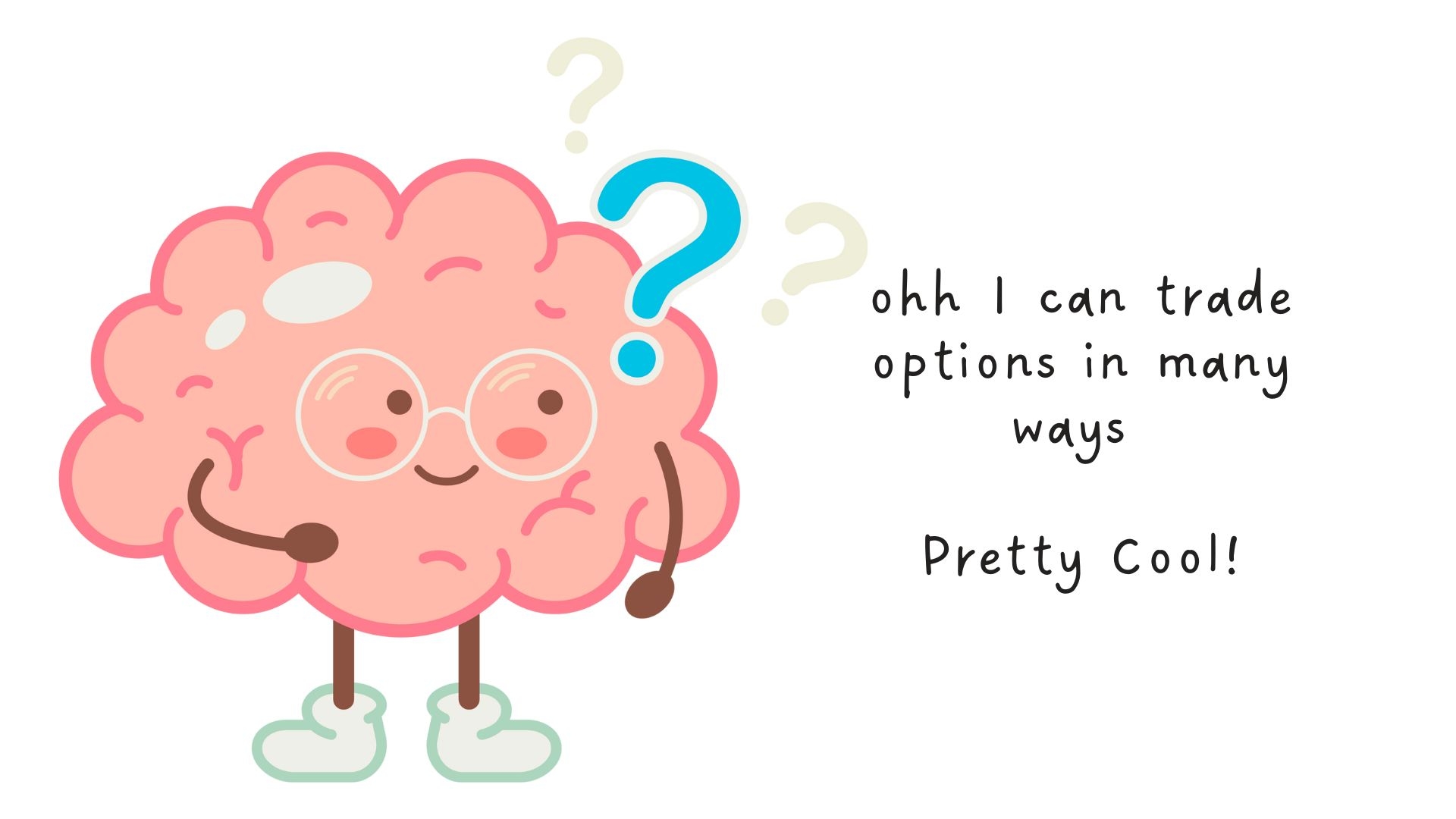
Where Are Options Traded?
Options are traded on major exchanges, just like stocks. The Chicago Board Options Exchange (CBOE) is the largest U.S. options exchange, followed by the Nasdaq Options Market and the NYSE American Options Exchange.
Most brokers allow options trading, but you may need to apply for options trading approval based on your experience level. Brokers want to make sure you understand the risks before they let you trade options.
Final Thoughts
Options trading gives you the ability to profit from stock movements with less money, hedge your investments, and use leverage to maximize gains.
But options also come with higher risks than regular stock trading. Unlike stocks, options expire, and if you don’t manage them properly, you could lose your entire investment.
If you’re new to options, the best approach is to start small, learn the basics, and practice on a demo account before risking real money.
The more you understand options, the better you’ll be prepared to trade successfully.
Key Takeaways
- Options are contracts that give you the right (not the obligation) to buy or sell a stock at a fixed price before a certain date.
- You pay a premium to reserve this right, like putting down a deposit. If the stock doesn’t move in your favor, you can walk away, but you lose the premium.
- Call options make money when the stock price goes up; put options make money when the price goes down.
- Every option has three parts: the strike price, expiration date, and premium.
- Options Greeks (Delta, Gamma, Theta, Vega) explain how price, time, and volatility affect option value. They help traders measure risk and movement.
- Implied Volatility (IV) shows how much the market expects the stock to move. High IV means higher option prices; low IV means cheaper options.
- Moneyness tells you if an option is profitable right now:
- ITM (In the Money) = already profitable
- ATM (At the Money) = right at the current price
- OTM (Out of the Money) = not profitable yet
- When options expire, they either have value (ITM) or expire worthless (OTM). Most traders sell before expiration to lock in profits or cut losses.
- Option prices have intrinsic value (real value now) and extrinsic value (based on time and volatility).
- Traders use options for hedging, speculation, and leverage, allowing them to control more shares with less money.
- You can trade options by buying or selling calls and puts, each has different risks and rewards.
- Options are traded on major exchanges like the CBOE, and brokers require approval to start trading them.





